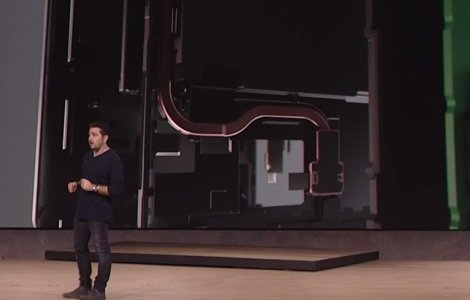- Aug 6, 2014
- 64
- 0
- 0

View attachment 113781
looks like a heat pipe, sony already introduct that way back to their Z3
https://d3nevzfk7ii3be.cloudfront.net/igi/nMDTVAdslQN4TwjM.large
I don't see why MSFT trying to claim this as some deskop level liquid cooling tech. In fact, there's too less detail had been released in this event and I'm a bit disappointed.
It's just marketing. It's definitely a heat pipePanos actually said it was "tablet class" - not desktop class
It's just marketing. It's definitely a heat pipe
Not a true heat pipe. Looks the same, but uses liquid, most commonly ethylene glycol, instead of dry air to cool. Liquid cooling is basically taking a heat pipe, making sure it's a sealed, closed system, and adding liquid instead of air to move through the pipe.View attachment 113781
looks like a heat pipe, sony already introduct that way back to their Z3
It's a sealed loop. The liquid cannot escape.What happens after it dries out?
Again, Not a true heat pipe. Looks the same, but uses liquid, most commonly ethylene glycol, instead of dry air to cool. Liquid cooling is basically taking a heat pipe, making sure it's a sealed, closed system, and adding liquid instead of air to move through the pipe.It's just marketing. It's definitely a heat pipe
Not a true heat pipe. Looks the same, but uses liquid, most commonly ethylene glycol, instead of dry air to cool. Liquid cooling is basically taking a heat pipe, making sure it's a sealed, closed system, and adding liquid instead of air to move through the pipe.
It's a sealed loop. The liquid cannot escape.
Again, Not a true heat pipe. Looks the same, but uses liquid, most commonly ethylene glycol, instead of dry air to cool. Liquid cooling is basically taking a heat pipe, making sure it's a sealed, closed system, and adding liquid instead of air to move through the pipe.
The liquid heats while in the evaporator area over the CPU, which causes it to expand into steam and be forced through a pipe that leads to an area called the "condenser" which will condense the liquid from a steam back into a liquid state. This cools the liquid, allowing it to complete the loop and bring cooler liquid back to the CPU again, which will in turn start the cycle over again.
So it's still a heat pipe but with the additional design.
But when you say, "It's just marketing. It's definitely a heat pipe." as you did in your previous post, you make it sound as if Microsoft falsely advertised liquid cooling when they did not. Almost all efficient cooling systems use some sort of pipe. The difference is between dry air being moved and liquid being moved, which is a huge difference with the efficiency level of the cooling. While it's not an "active liquid cooling" complete with pumps and an external reservoir, it is still much more efficient than a simple heat pipe, and a heat pipe is more efficient than a simple heat sink, and a heat sink is more efficient than nothing.

